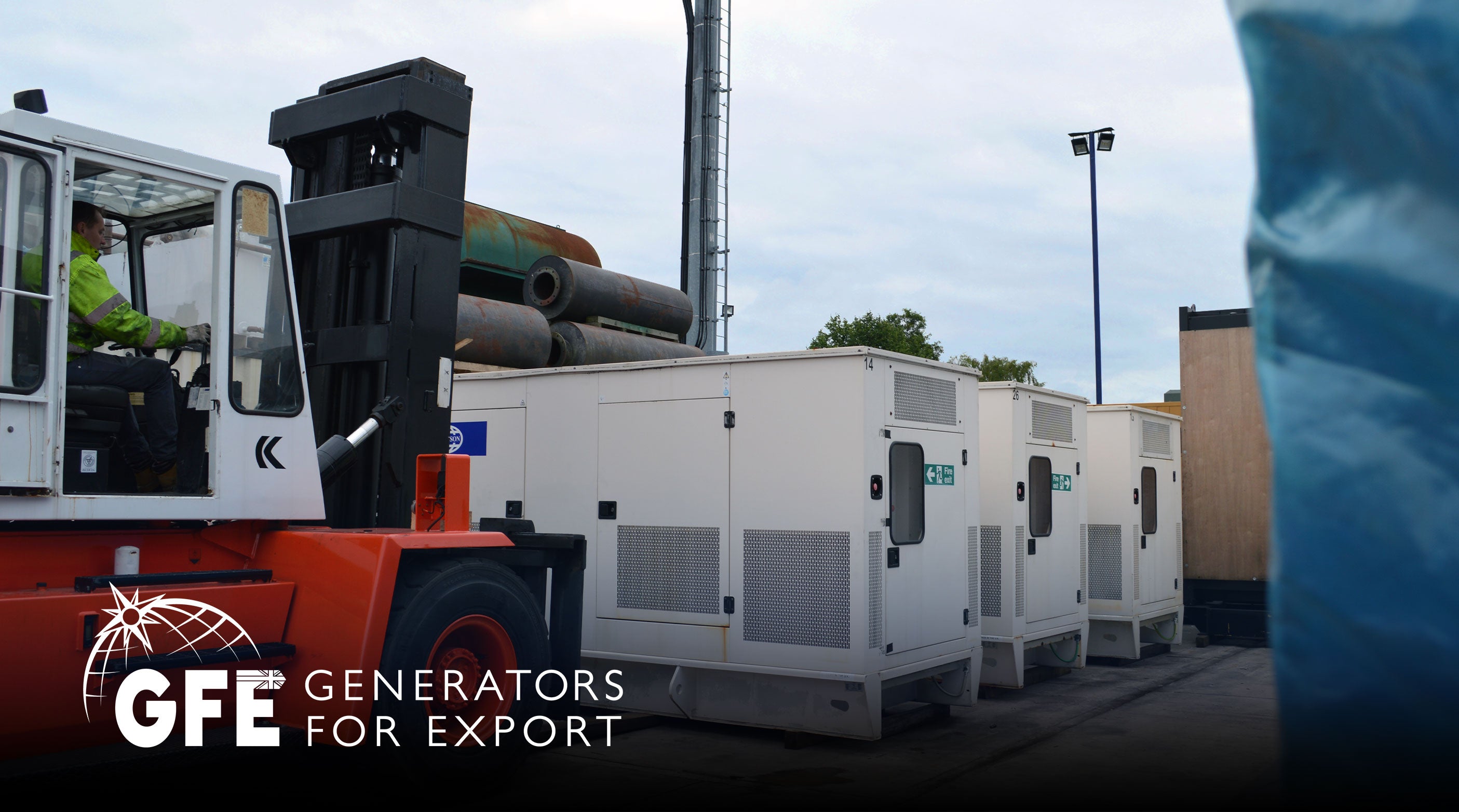A diesel generator produces electricity through a process known as electromechanical energy conversion. It converts chemical energy stored in diesel fuel into mechanical energy, which is then transformed into electrical energy.
Here at Generators For Export we have a wide range of diesel generators available. From open sets designed for use in hot climates or within purpose built facilities. To large 40ft containerised generators capable of running entire factories as a constant power solution or as a backup power resource.
Here's a step-by-step explanation of how a diesel generator works:
Combustion
The process begins with the combustion of diesel fuel within the generator's internal combustion engine. Diesel fuel is injected into the engine's combustion chamber, where it mixes with air and is ignited by a spark plug or compression ignition. This controlled explosion generates high-pressure gases.
Piston Movement
The combustion of diesel fuel pushes a piston within the engine's cylinder. This movement is what converts the chemical energy of the fuel into mechanical energy. Diesel engines are typically of the compression-ignition type, where air is compressed in the cylinder, and the heat of compression causes the diesel fuel to spontaneously ignite.
Crankshaft Rotation
As the piston moves down the cylinder due to the force generated by combustion, it is connected to a crankshaft. The crankshaft is a rotating shaft that converts the linear motion of the piston into rotational motion. This rotation of the crankshaft is what ultimately drives the generator's alternator.
Alternator Operation
The generator's alternator (also known as a generator head) is connected to the crankshaft. It consists of a rotor and a stator. The rotation of the crankshaft causes the rotor to spin within a magnetic field generated by the stator. This relative motion between the rotor and the stator induces an electrical current in the stator windings due to electromagnetic induction. This current is in the form of alternating current (AC).
Voltage Regulation
The AC voltage generated by the alternator can vary based on factors such as engine speed and load. To ensure a stable and consistent voltage output, a voltage regulator is used. The voltage regulator adjusts the excitation current supplied to the alternator's rotor, which in turn controls the output voltage.
Conversion to Usable Electricity
The AC output from the alternator is typically at a relatively high voltage and frequency. In many applications, this voltage needs to be transformed into a more usable form. This is achieved using a transformer and rectifier. The transformer steps down the voltage to a suitable level, and the rectifier converts the AC to direct current (DC), which can then be further converted to the specific voltage and frequency required by the electrical load through additional components such as inverters.
Power Distribution
Finally, the generated electricity is sent through electrical circuits and distribution systems to power electrical devices, appliances, or buildings.
Diesel generators are commonly used as backup power sources in situations where a reliable source of electricity is needed, such as during power outages or in remote locations where access to the electrical grid is limited. They are valued for their ability to provide a stable and consistent source of electricity over extended periods when properly maintained and fuelled. View our full range of used generators, we have the right power solution for you! Get in touch today, we can answer all of your used generator questions.
Call: +44(0)1386 553344 | Email: sales@gfe.uk.com

